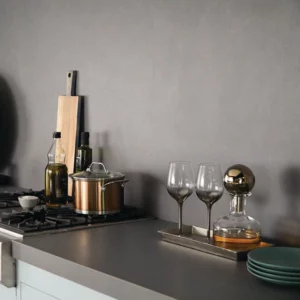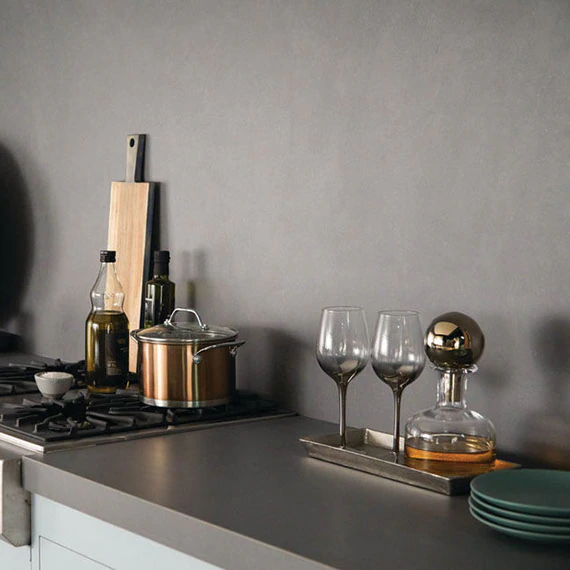Concrete countertops have enjoyed a surge in popularity, touted for their industrial chic aesthetic and customizable nature. However, for homeowners in the Pacific Northwest, those trendy slabs might quickly turn into a source of frustration and regret. Our region’s unique climate, characterized by persistent moisture, fluctuating temperatures, and frequent rainfall, poses significant challenges for concrete’s long-term durability and aesthetic appeal.
Let’s delve into the reasons why concrete countertops often fall short in the Pacific Northwest:
1. Moisture Absorption and Concrete Staining:
Concrete, by its very nature, is porous. This inherent porosity makes it incredibly susceptible to absorbing liquids, especially in a region known for its relentless drizzle. Spilled coffee, wine, or even plain water can penetrate the surface, leading to unsightly stains that are often difficult, if not impossible, to remove. In the damp environment of the Pacific Northwest, this issue is amplified, as the constant humidity prevents the concrete from fully drying, exacerbating the staining problem.
Furthermore, sealers, while helpful, are not foolproof. They degrade over time and require regular reapplication. Neglecting this maintenance can result in permanent staining and damage.
2. Freeze-Thaw Cycles and Concrete Cracking:
The Pacific Northwest experiences significant temperature fluctuations, especially during the winter months. These freeze-thaw cycles can wreak havoc on concrete countertops. When water absorbed into the concrete freezes, it expands, putting stress on the material. This repeated expansion and contraction can lead to cracking and spalling (surface flaking). Even hairline cracks, initially invisible, can widen over time, compromising the countertop’s structural integrity and aesthetic appeal.
While proper sealing can offer some protection, it’s not a complete solution. The constant exposure to moisture and temperature variations makes concrete particularly vulnerable in our climate.
3. Mold and Mildew Growth:
The persistent dampness of the Pacific Northwest creates an ideal breeding ground for mold and mildew. Concrete’s porous nature allows moisture to seep in, providing the perfect environment for these unwanted guests to thrive. Mold and mildew growth not only creates unsightly stains but also poses health risks, especially for individuals with allergies or respiratory sensitivities.
While sealers can help prevent moisture penetration, they don’t eliminate the risk entirely. The constant exposure to humidity means that even sealed concrete countertops are more prone to mold and mildew growth compared to non-porous materials like quartz or granite.
4. Concrete Countertop Maintenance Demands:
Concrete countertops require a significant amount of ongoing maintenance to mitigate the risks associated with moisture and staining. Regular sealing, cleaning with specialized products, and immediate wiping of spills are essential. This level of maintenance can be time-consuming and demanding, particularly for busy homeowners.
In the Pacific Northwest, where the climate constantly challenges the integrity of concrete, the maintenance burden is even higher. The need for frequent resealing and meticulous cleaning can become a significant drawback.
5. Environmental Concerns:
Concrete production is a carbon-intensive process, contributing significantly to greenhouse gas emissions. In a region that values environmental sustainability, opting for concrete countertops may conflict with those values. While some manufacturers offer eco-friendly concrete mixes, the overall environmental footprint remains a concern.
Alternatives for the Pacific Northwest:
For homeowners in the Pacific Northwest seeking durable and low-maintenance countertops, several alternatives offer superior performance in our climate:
- Quartz: Non-porous, highly resistant to staining, and requires minimal maintenance.
- Granite: Naturally resistant to moisture and heat, offering excellent durability.
- Porcelain: Large format porcelain slabs are an excellent alternative. They are non-porous, incredibly durable, resistant to scratches, heat, and stains, and are easy to clean. Importantly, the concrete look is easily replicated with these porcelain slabs, allowing you to achieve the desired aesthetic without the inherent drawbacks of actual concrete.

While concrete countertops may appear appealing in design magazines, their susceptibility to moisture, cracking, and mold, coupled with high maintenance demands, makes them a less-than-ideal choice for the challenging climate of the Pacific Northwest. Before committing to concrete, carefully consider the long-term implications and explore alternative materials, particularly porcelain, that are better suited to our region’s unique conditions.
